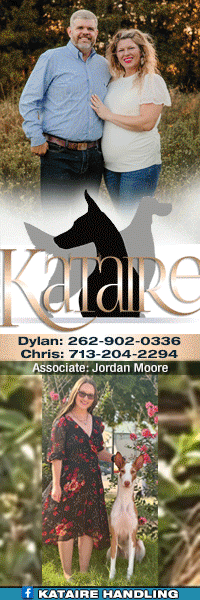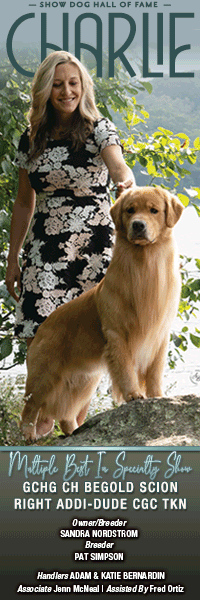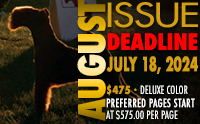Dogs of North America
by Amy Fernandez
 America is the land of opportunity and it’s never been limited to humans. A surprising number of obsolete Old World breeds regained their momentum on these shores. Primarily, this occurred within the context of the East Coast show scene that dominated America’s purebred paradigm for over a century. However, it happened in a much more authentic sense for many others that were recruited into the ranks of American dogdom for their traditional functionality.
America is the land of opportunity and it’s never been limited to humans. A surprising number of obsolete Old World breeds regained their momentum on these shores. Primarily, this occurred within the context of the East Coast show scene that dominated America’s purebred paradigm for over a century. However, it happened in a much more authentic sense for many others that were recruited into the ranks of American dogdom for their traditional functionality.
In 1492, Columbus blazed the way for this unprecedented intercontinental culture clash, and humans were only part of that deal. Actually, from a canine perspective, he was rather late to the table, carrying no dogs until his second transatlantic voyage in late 1494 when he arrived with 17 vessels packed with soldiers, settlers, and purebred Spanish Hounds, Pointers, and Mastiffs. Within five years, the floodgates opened. In 1497, English explorer John Cabot revitalized Britain’s fishing industry after returning home to announce that the codfish off of Newfoundland’s Grand Banks could be scooped into baskets from the sides of ships. By 1585, America’s Atlantic coast teemed with British, French, Portuguese, and Dutch fishing operations. Waterdogs from all of these countries became the first wave of breeds to experience this unforeseen wrinkle in their evolutionary history.
Officially, the first European dogs arrived at Tampa Bay with Hernando de Soto in May 1539. His regimental Mastiffs and Greyhounds immediately headed a list of essential breeds for settlers and explorers over the next three centuries. These early arrivals were merely a precursor to importation on a much more substantial scale from the late seventeenth to early nineteenth centuries as expansion followed a predictable pattern. Hunters, trappers, and explorers opened the frontier with their hunting and protection dogs. Pioneers followed in their wake, establishing permanent settlements to trade and clear land for crops and livestock. This required thousands of purpose-bred dogs with every traditional canine skill set. Although Europeans had always relied on dogs, nothing prepared them for the challenges they faced over here. Dogs were essential to survival in every sense of the word.
Of course, North America has never suffered from a dog shortage. Its native crop sprang from the same Canis intermedius and Canis palustris foundation that proliferated throughout prehistoric Eurasia. They accompanied human migrations as they gradually populated North America by 10,000 BC and became the basis for at least seventeen indigenous breeds. They were hardy, adaptable, and ideally adapted to life on this continent. However, only a handful like the Xoloitzcuintli and Malamute survived European encroachment. Until then, extreme specialization hadn’t significantly influenced dog breeding simply because it offered no tangible advantage over here. For instance, motivating forces of Old World breed development like firearms and domesticated livestock were unknown until Europeans introduced them.

Europeans couldn’t comprehend or appreciate the typical versatility of Native American breeds. More importantly, Native Americans quickly became sold on the idea of intensive specialization. But the major issue was that European settlers simply gravitated to their familiar breeds. Thousands of them arrived from every other corner of Europe. Nevertheless, Britain’s influence soon dominated American dog development. It was the major source of innovations in purebred development -including 65 unique breeds.
When all this was going down in the 1500s Mastiffs were Britain’s most celebrated breed thanks to the sustained popularity of bull and bear baiting. Thankfully, the appeal of this national pastime began to wane long before the 1845 Cruelty to Animals Act officially banned these gory diversions. Hutchinson’s Dog Encyclopedia confirms, “After the cessation of the sport of bear baiting, the Mastiff seems to have become scarcer and scarcer, so that Sydenham Edwards in the Cynographica Britannica published in 1800 and Taplin in The Sportsman’s Cabinet, published in 1803 inform us that the breed has been deteriorated by numerous crosses and was rarely to be seen in its purity.” The Mastiff’s collision course with extinction was averted by a sudden unanticipated, insatiable demand that arose in America. Dangerous predators the likes of which had long disappeared from Europe were a daily problem over here. As in medieval times, no one ventured far from home without a canine bodyguard. For example, in 1757 Benjamin Franklin lobbied the Pennsylvania legislature for the importation of 50 purebred English Mastiffs to organize a sort of local canine militia.
Ironically, the soaring popularity of Newfoundlands contributed greatly to the Mastiff’s decline at home. Newfie forerunners first arrived in England with returning fishing expeditions in the sixteenth century. It was soon transformed into the iconic symbol of Victorian benevolence thanks to influential promoters like Queen Victoria, Lord Byron, and Sir Edwin Landseer. Like all breed fads, that fleeting popularity succumbed to the next big thing in England, but not over here.
Until Europeans introduced horses and livestock in the fifteenth century, dogs were North America’s only domesticated animal capable of hauling cargo. Even after their introduction, most tribes used both dogs and horses to haul cargo well into the nineteenth century. Seasonal Plains Indian migrations utilizing almost 1000 dogs hauling loads of food, firewood, and household supplies are amply documented in both art and history.
 Traditionally, Native American draft dogs were produced by crossbreeding to wolves to compensate for the domestication’s inherent size reduction. Wolfdog hybrids had strength – and obvious drawbacks as noted by Youtt in The Dog. “The favorite hauling dog is a product of the Eskimo crossed with a wolf…He is very seldom seen in Great Britain, probably for the reason that his very near relationship with the wild wolf is against him as a possible companion in civilized life.” In this respect, the Newfoundland’s sheer size and strength far surpassed the capabilities of Indian dogs, minus the surly temperament.
Traditionally, Native American draft dogs were produced by crossbreeding to wolves to compensate for the domestication’s inherent size reduction. Wolfdog hybrids had strength – and obvious drawbacks as noted by Youtt in The Dog. “The favorite hauling dog is a product of the Eskimo crossed with a wolf…He is very seldom seen in Great Britain, probably for the reason that his very near relationship with the wild wolf is against him as a possible companion in civilized life.” In this respect, the Newfoundland’s sheer size and strength far surpassed the capabilities of Indian dogs, minus the surly temperament.
For various reasons, European transplants remained resistant to using draft dogs, as Robert Leighton acknowledged in Dogs and All About Them. He wrote, “Many persons not yet very old can remember a time when dogs were commonly used for draught work in England. Two or more muscular mongrels might be employed to drag a light vehicle, and it was a frequent sight in the parks and country roads to see a brace of dogs of the better sort harnessed to children’s carriages. Costers would often take out their sweethearts on a Sunday afternoon in a chaise drawn by dogs. At one time dogs did almost all the traction labour that is now done by the donkey.” Writing in 1914, Leighton emphasizes that this ubiquitous canine job had disappeared through most of Europe by then after being banned in Britain in 1843.
Concurrent with that redundancy, America’s Gold Rush triggered a rocketing demand for draft dogs. Shortly after acquiring the Alaska territory in 1849, a Russian mining engineer discovered gold on the Kenai Peninsula. Serious mining began in 1870 and the rush was on as the world learned of major strikes in Juneau, Circle City in 1893, and the Canadian Yukon. Aside from that, draft dogs remained essential simply because they were the only animals capable of navigating much of America’s terrain, the subject of a Harpers Magazine feature Locomotion – Past and Present published January, 1873. “When the snow lies deep over wide stretches of country, they furnish the only means of transporting provisions, merchandise, and the mail delivery. In many parts of Canada and the Lake Superior mineral districts, the inhabitants would be utterly shut off from the rest of the world during several months of the year were it not for these invaluable creatures.” Reiterating the point, Harpers adds that by 1873, the Royal Canadian Mounted Police and Canadian Postal Service had converted to dogsled transportation.
Its increasing scarcity in Britain eventually prompted fanciers to venture over here where Newfoundlands also reigned supreme as America’s favorite companion breed despite the logistical complications of city life with giant dogs.
America’s challenges also reignited interest in another long forgotten canine occupation, coursing big game. In the nineteenth century, Great Dane popularity seemed to grip America like a shockwave. Not. The breed actually began gaining traction over here more than a century before the collective dog world branded it with that name. Arriving German immigrants venturing westward came well-equipped with Boarhounds to ward off bears, wolves, coyotes, bobcats, lynx, mountain lions, as well as wild boar. Among others, the Plott Hound traces back to that stock imported from Germany in the 1700s.
America revitalized interest in German, Dutch, and Spanish hunting Mastiffs, but nothing suited the purpose better than heavyweight hounds. Like its Mastiffs, Britain’s hounds were a source of international pride since ancient times. Variously known as greyhounds, wolfdogs, wolfhounds, and swift hounds, they sprang from a combination of Middle Eastern Sighthounds and Asian Molossers, and were ubiquitous throughout the British Isles well before Roman occupation. Unfortunately, every incarnation of this amazing blend was rapidly disappearing as European hunting protocols shifted the focus from coursing to firearms. Their heyday was a distant memory by 1904 when Joseph Graham critiqued America’s unusual purebred revival in The Sporting Dog. “Indeed, if I were writing a volume on American hounds the most exciting chapters would be descriptions of wolf hunts,” he wrote.
Wolves weren’t the only problem as David Michael Duffey confirmed in his 1972 Hunting Hounds. He wrote, “Dispatching a jackrabbit is no problem for a single hound, but it usually takes a pair to deal with the prairie wolf, although dogs willing and capable of doing the job alone are highly prized….but regardless of the method, the sport calls for lean, sinewy, deep chested, tough footed hounds with strong necks and punishing jaws, sharp visaged and alert for flashes of movement that indicate their quarry. They are not pets or show horses, they are exterminators of vermin.”
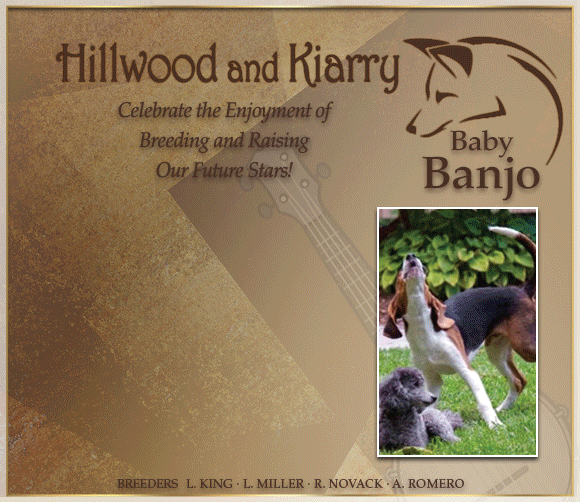
Duffey explains that most purebred sighthounds initially arrived with European sportsmen seeking adventure, often the disinherited younger sons from the elite families that had maintained these breeds for centuries. “Back in the days when the Great American Desert ranged with bison, antelope, deer and other game, it was the fashion of European nobility to make safaris to the American West accompanied by a retinue of servants and old country wolfhounds and deerhounds favored by English and Russian nobility,” he said. Perhaps these breeds were an anachronism back home, but over here their bone, substance, speed, protective coats, and sheer grit and killing ability were ideal for game and conditions. Their American debut triggered a surging demand for dwind-ling breeds like the Scottish Deerhounds, Irish Wolf-hounds, and another ancient breed in equally jankety shape by then, the Borzoi.
Much information about them comes via the colorful accounts of General George Custer who spent many years commanding frontier outposts for the Seventh Cavalry prior to his notorious demise at the Little Big Horn. For lack of better diversions, Custer chronicled his exploits for sporting journals like Turf, Field, and Farm under the pen name ‘Nomad’. He organized endless hunting parties for visiting dignitaries, which became the source of his famous Hound pack. For instance, in 1872 he spent several months escorting Czar Alexander II buffalo hunting with his royal Borzoi, then the last purebred remnants of this ancient breed.
 A year later Russian breeders organized the Society for the Development of Hunting Dogs, authored a new Borzoi standard, and began sponsoring events to revive interest in the breed. Grand Duke Nikolai Nikolaievich, uncle of Russia’s last Czar, soon founded his Perchino kennel which eventually maintained 300 adult Borzoi, and was acknowledged as Russia’s greatest hunt kennel. Most of its renowned hunt kennels were gone by 1900 as political upheaval overtook the country. Borzoi recovery continued in America but primarily as show dogs. And the man primarily responsible for saving the breed, Joseph Thomas, was dedicated to promoting it within the context of functionality. He succeeded, as Duffey confirmed by writing, “At one time the breed even won the advocacy of the USDA as a useful aid to ranchers for predator control.”
A year later Russian breeders organized the Society for the Development of Hunting Dogs, authored a new Borzoi standard, and began sponsoring events to revive interest in the breed. Grand Duke Nikolai Nikolaievich, uncle of Russia’s last Czar, soon founded his Perchino kennel which eventually maintained 300 adult Borzoi, and was acknowledged as Russia’s greatest hunt kennel. Most of its renowned hunt kennels were gone by 1900 as political upheaval overtook the country. Borzoi recovery continued in America but primarily as show dogs. And the man primarily responsible for saving the breed, Joseph Thomas, was dedicated to promoting it within the context of functionality. He succeeded, as Duffey confirmed by writing, “At one time the breed even won the advocacy of the USDA as a useful aid to ranchers for predator control.”
Custer’s pack, which eventually exceeded 80 Hounds, was maintained by his orderly, John Burkman, who apparently wasn’t the ideal kennel man. They regularly escaped to terrorize local residents and livestock resulting in predictably fatal retaliation. That wasn’t all. Custer’s A Hunt on the Plains published in Turf, Field and Farm in November, 1869 concludes with the accidental shooting of his favorite Deerhound, Maida. The typical life of plains dogs was highlighted in a December 14, 1907 Forest and Stream article recounting a singular episode in the life of one of Custer’s famous Greyhounds, a big brindle dog he received from Queen Victoria. While Custer was back East, the dog was accidentally shot during a hunt. The ball entered at the root of his tail, passed through his body, emerging through his right shoulder. Assuming that this wound was fatal, Burkman placed the dog on a soft nest of grass beside a brook and left it to die. Two weeks later it came trotting back to Fort Harker.
Deerhounds languished in obscurity for over a century before the 1838 publication of The Art of Deerstalking triggered a brief resurgence as Edward Ash remarked in The Practical Dog Book. He wrote, “Probably due to Scropes book, interest in the breed returned and by 1842 the deerhound was commonly kept in Scotland and could claim to be a national breed.” That revival was inspired by the book’s detailed account of traditional deer hunting with Hounds. However, that thrilling portrayal was more of an academic pursuit in nineteenth-century Britain as enclosure laws gobbled up public land and confined deer to parks and preserves. Experiencing the real deal required packing up those Hounds to hunt in America. Deerhounds arrived by boat, train, and wagon to course big game on western America’s wide open prairies.
Way before this happened, America’s demand for Irish Wolfhounds unfortunately didn’t coincide with anything comparable at home. By the fifteenth century, Ireland’s wolfdogs were internationally renowned as Nicholas Cox noted in his 1677 bestseller, The Gentleman’s Recreation. “They possess an incredible force and boldness so that they are in great estimation and much sought after in foreign parts,” adding that the breed’s fans include James I and the king of Poland.
Wolves survived in England until approximately 1500, in Scotland until 1740, and in Ireland until 1770. The fate of wolfdogs mirrored these stats. By the time colonial landowners like George Washington realized the need for high-powered wolf control, they were out of luck. In 1787 Washington enlisted his patriotic cohort Lafayette to procure “True Irish Wolfdogs” to protect his flocks. Despite their combined social and political clout, they came up empty-handed. Washington then wrote to Irish MP Sir Edward Newenham. His July 20, 1788 letter explained, “I have been several years endeavoring to get that breed without success, it is nearly annihilated.” Newenham’s reply confirmed this fact.
Writing in 1803 Taplin admitted, “The Irish greyhound is rarely seen and that it is doubtful if one of the pure, unmixed breed is to be found even in the most remote parts of the country.” A half-century later, a fanatically dedicated group headed by the irrepressible Captain Graham set about reconstructing the breed from a basis of Deerhound, Dane, and sundry other things. While purists debated the legitimacy of the revised version, The Modern Dog Encyclopedia confirms that legions of them proved their mettle in America. “The Irish Wolfhound has found considerable favor among present day sportsmen, being used in this country for hunting timberwolves and coyotes.”
America also became a vital conduit for Greyhound continuation. In Europe, centuries of law and tradition had restricted ownership to a tiny minority of privileged elite. That situation became the breed’s undoing when this group lost interest. The neglected gene pool faltered by the mid-1700s and most experts conceded that the noble Greyhound was more myth than fact. The famously eccentric Lord Orfort is credited with reviving the breed and popularizing formal coursing in Britain a few decades later. Events like the Waterloo Cup reawakened international interest in British Greyhounds. Meanwhile, Graham confirms that thousands of them poured into America for quite different reasons.
He wrote, “History will never tell us who was the first American to see a jackrabbit. Whoever it was, he must have instantly felt the need of a Greyhound. This large hare of the western plains has a dash of speed which takes him quickly out of the range of any ordinary dog and the endurance which precludes being captured by any plan that involves stopping from exhaustion. Greyhounds were an early introduction to the plains by cattlemen with a taste for sport.” He adds that this led to formal coursing by 1885, but by the time of his writing in 1904 interest in that sport had dropped off precipitously. It didn’t matter. By then, Greyhounds were embedded in American tradition as Duffey notes, “The lean, tough Greyhound in unalloyed form has made a name for itself as a jackrabbit and coyote exterminator on the Western Plains, although there are probably more grade greyhounds working the hunting country than registered representatives.”
He’s right. Most of this purebred renaissance occurred outside the parameters of kennel club documentation. Moreover, these are just a fraction of the established breeds subjected to unconventional reinterpretation over here. Perhaps they evolved off the grid for purposes their creators never envisioned. And from a superficial vantage point, this might seem to contradict the most basic precepts of purebred philosophy. In reality, it validates them in the most powerful way. Those marvelous skills, refined for centuries in carefully crafted bloodlines, were perpetuated for their original intent.
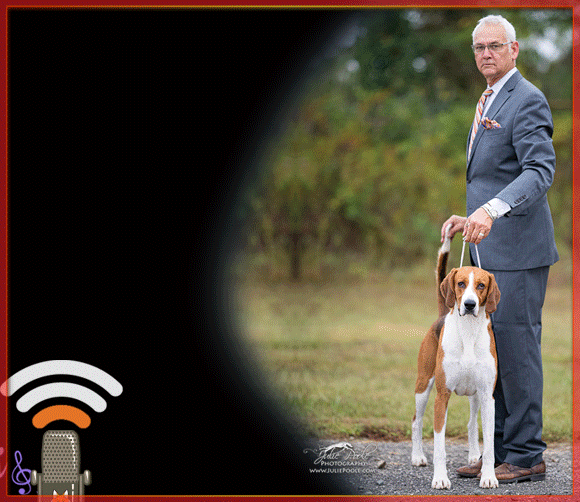
Short URL: http://caninechronicle.com/?p=95672
Comments are closed




